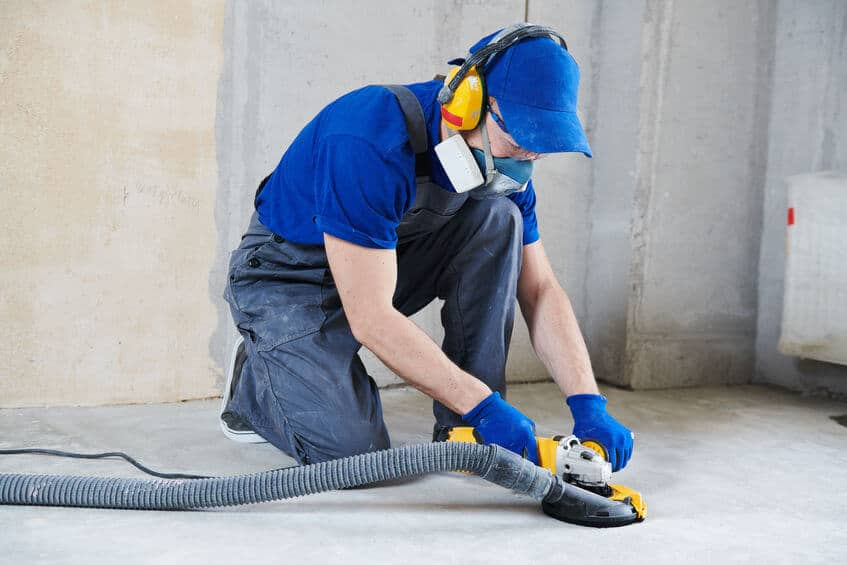How Do Concrete Grind Professionals Achieve a Smooth and Level Surface?
Concrete grinding is an important process in the construction and renovation business that assists in producing smooth, level, and polished surfaces. Whether residential, commercial, or industrial, getting a perfect concrete surface is not an easy task and needs skill, accuracy, and proper tools. This is where concrete grind experts are needed. They have the skills to turn rough, uneven, or damaged concrete surfaces into smooth and beautiful finishes.
Surface Inspection and Assessment
The initial step for any concrete grind expert is to inspect the surface thoroughly. They check the concrete for cracks, uneven surfaces, high points, and other defects. This informs them of the amount of grinding needed and any repairs that need to be done prior to the grinding process. Inspection also informs them of the tools and techniques to use for the task.
Preparation of the Area
Professional installers prepare the site prior to beginning the grinding process for efficiency and safety purposes. They clean the room or area of any furniture, obstructions, or debris that would interfere with grinding. If they are working inside, they would seal off neighboring rooms to ensure dust does not spread. Adequate preparation helps in obtaining maximum results.
Selecting Appropriate Grinding Machinery
Trained concrete grinders employ powerful grinding equipment with diamond-segmented abrasives. The equipment varies in size and power according to the size and nature of the surface to be treated. Some of the widely used grinding equipment are:
•Handheld Grinders: Suitable for small areas, edges, and tight spaces.
•Walk-Behind Grinders: Ideal for large floor surfaces that need leveling or surface preparation.
•Planetary Grinders: Offer high precision and smooth finishes for large surface areas.
The type of grinder used significantly affects the smoothing and leveling of the surface.
Grinding of Concrete Surface
•Coarse Grinding: Eliminates surface irregularities and high spots.
•Medium Grinding: Smoothes the surface and removes small flaws.
•Fine Grinding/Polishing: Gives a smooth, even finish and readies the surface for sealing or coating.
While grinding, experts employ sophisticated techniques to ensure uniformity over the surface and prevent uneven spots.
Dust Control and Cleanup
Concrete grinding creates a lot of dust, and if not properly controlled, this dust can be dangerous. Experienced concrete grinders employ industrial vacuums or dust shrouds on the grinder to control airborne dust. Wet grinding is also used by some professionals where water is used to minimize dust and cool the surface.
Once ground, the whole area is cleaned well to eliminate any residual dust or debris, leaving a clear and glossy surface.
Surface Sealing or Coating (Optional)
For most occasions, concrete grind experts will coat the freshly ground surface with a sealant or a coating. This extends durability, resists moisture penetration, and provides a glossy, polished appearance for the concrete. The most popular surface finishes are:
•Concrete Sealers: Moisture, stain, and wear protection.
•Epoxy Coatings: Durable, high-gloss finish for commercial and industrial applications.
•Polished Concrete: Attained by continuing the grinding process until the surface has a mirror-like finish.
Sealing or coating the surface makes it smooth, clean, and damage-resistant for years to come.
Final Inspection
Once the grinding and sealing are finished, concrete grind professionals conduct a final check to ascertain that the surface is smooth, level, and imperfection-free. They further inspect for any missed rough patches or uneven areas and make touch-ups where necessary. This procedure ensures a perfect finish.
Why Should You Use Professional Concrete Grinders?
Although DIY concrete grinding may appear to save money, it tends to produce uneven finishes, high dust content, and surface damage. Professional concrete grind contractors have the following advantages:
•Accuracy and Uniformity: Experts apply proper tools and methodology to provide a level and even finish.
•Efficiency in Time: Having experience and the right machinery makes them proficient at finishing the work rapidly and effectively.
•Dust Control: Dust is controlled by professionals with industrial vacuums and wet grinding techniques.
•Quality Finish: The outcome is a clean, polished finish that improves the overall look of the area.
Conclusion
It takes skill, accuracy, and the appropriate tools to create a smooth, level concrete finish — all qualities concrete grind experts have. From inspection to sealing, they complete the work flawlessly. No matter if you're remodeling your residence, resurfacing a commercial building, or leveling an industrial floor, hiring seasoned concrete grind experts is the key to ensuring outstanding results.

.png)

Comments
Post a Comment